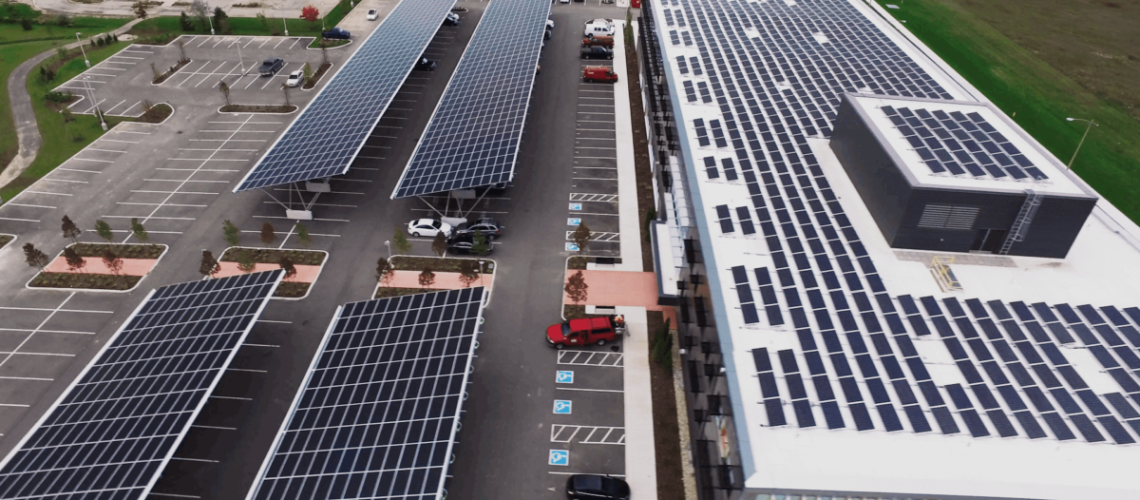A closer look at guidance on the Inflation Reduction Act domestic content adder.
It’s been over a year since the passage of the Inflation Reduction Act, a landmark piece of legislation designed to bolster U.S. clean energy infrastructure, manufacturing and adoption. The bill includes numerous incentives for U.S. solar production. These products are more attractive and cost-efficient than ever and we’ve seen new solar projects and manufacturing capacity announced at record rates over the past year as a result.
However, for some IRA tax credits and benefits, the qualifying factors remain unclear, opening up industry debate on how U.S. cleantech products and projects will be assessed throughout the rest of the decade and beyond. This includes the IRS’s proposed guidance on which renewable energy projects will qualify for an additional 10% domestic content tax credit.
In the solar industry in particular, this guidance gives an advantage to companies that have already committed to U.S. parts and labor for manufacturing and installation but there are also challenges and discrepancies that should be addressed before the guidance is finalized.
Potential challenges
The new guidance states that manufactured products qualifying for the added tax credit must be produced in the U.S. This means all manufacturing processes must be U.S.-based and furthermore, that all of such product components must be of U.S. origin. This guidance contradicts the Made in America Act, which calls for U.S.-based manufactured products to have a 55% of such product’s total cost to come from U.S. made components. This discrepancy should be addressed prior to the new guidance. It’s particularly important to have clear qualifications for solar products, where varied components and materials are necessary to manufacture and install modules.
On a similar note, solar glass and cells – two essential components for building modules – are currently not being manufactured anywhere in the U.S. Some domestic manufacturers work closely with a Canadian company that is planning to manufacture solar glass rather than turning to overseas manufacturers once they are up and running. However, that means their products would not currently qualify for the price to be used on the domestic adder but only the portion of the costs attributable to domestic components. This new guidance and the IRA overall is expected to attract more domestic manufacturing. It will be important that companies offering cells, glass and other underrepresented items are prioritized and encouraged to set up operations in the U.S. to help manufacturers achieve entirely U.S.-made modules that qualify for the 10% adder.
What’s Next
Regardless of what political shifts may be headed our way, U.S. solar manufacturing and installation won’t be slowing down any time soon. The business case for solar in this country is based on its strong and rewarding return on investment, meaning the industry will continue to grow and mature.
To support this continued growth, all U.S.-based clean energy manufacturing and development should be incentivized to use more domestic materials. Refining guidance found in the IRA, like the domestic content adders, should make U.S. manufacturing and sourcing easier and more lucrative over time as well. We can also expect the domestic incentive aspect of the IRA to help attract more solar component manufacturers to the U.S., particularly to fill the gap in domestic glass and cell manufacturing we currently see. In the meantime, solar manufacturers who are currently using a mix of U.S. and foreign-made components will need to disclose their entire cost breakdown for their customers to qualify for these credits. While this may be an unfamiliar requirement for some, it is ultimately a good thing – more transparent costing and hence pricing will encourage market competition.
Looking beyond manufacturing guidelines, companies expanding their U.S. solar operations need to also keep a close eye on wage requirements; many may need to pay workers the prevailing wage to qualify for funding.
All incentives included in the IRA will be beneficial to bolster adoption and awareness for clean energy technologies among consumers, manufacturers and local governments. One year after its passage is a perfect time to examine guidance like the domestic content adders to ensure it prioritizes strengthening U.S. manufacturing and supply chains for years to come.
Martin Pochtaruk has 35 years of experience managing manufacturing and innovation businesses across Europe and the Americas. He founded Heliene, a technology leading high quality solar PV manufacturer in 2010.



